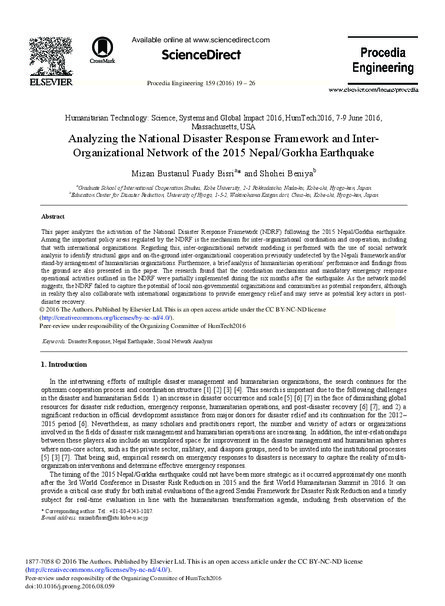
This paper analyzes the activation of the National Disaster Response Framework (NDRF) following the 2015 Nepal/Gorkha earthquake. Among the important policy areas regulated by the NDRF is the mechanism for inter-organizational coordination and cooperation, including that with international organizations. Regarding this, inter-organizational network modeling is performed with the use of social network analysis to identify structural gaps and on-the-ground inter-organizational cooperation previously undetected by the Nepali framework and/or stand-by arrangement of humanitarian organizations. Furthermore, a brief analysis of humanitarian operations’ performance and findings from the ground are also presented in the paper. The research found that the coordination mechanisms and mandatory emergency response operational activities outlined in the NDRF were partially implemented during the six months after the earthquake. As the network model suggests, the NDRF failed to capture the potential of local non-governmental organizations and communities as potential responders, although in reality they also collaborate with international organizations to provide emergency relief and may serve as potential key actors in post-disaster recovery.